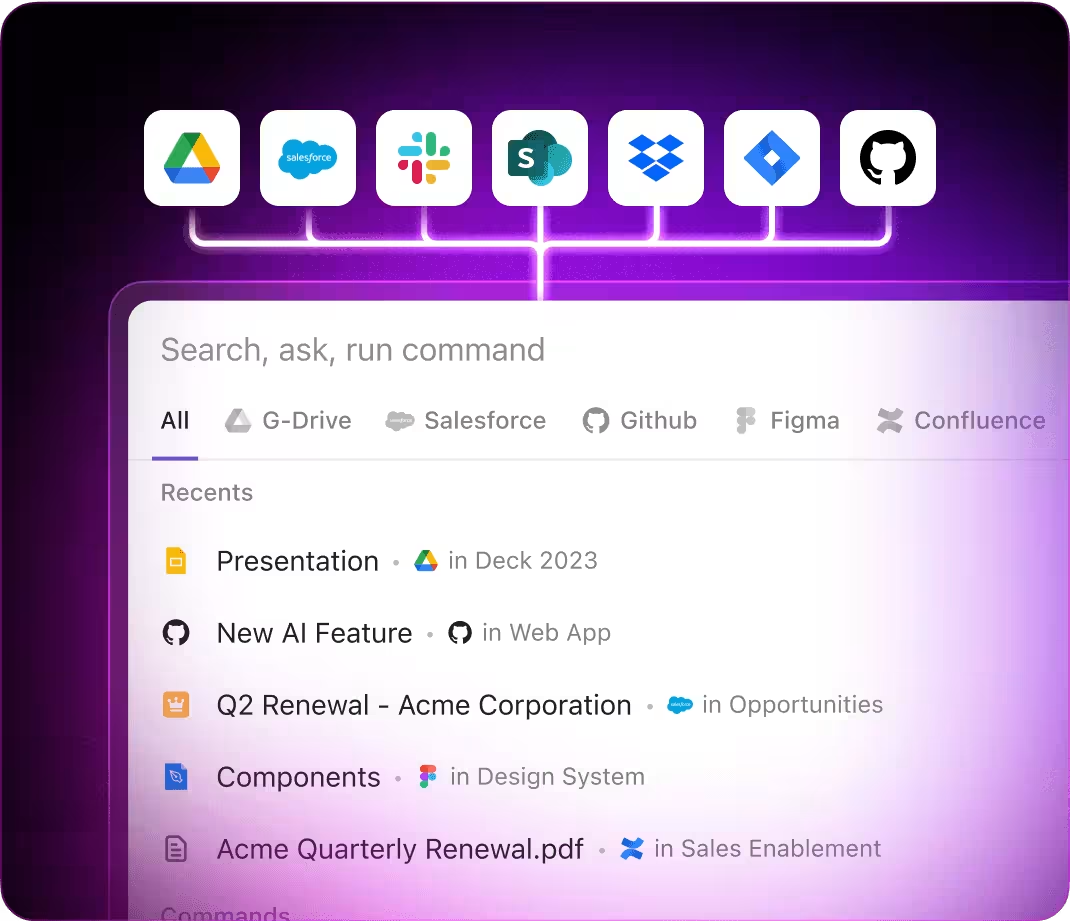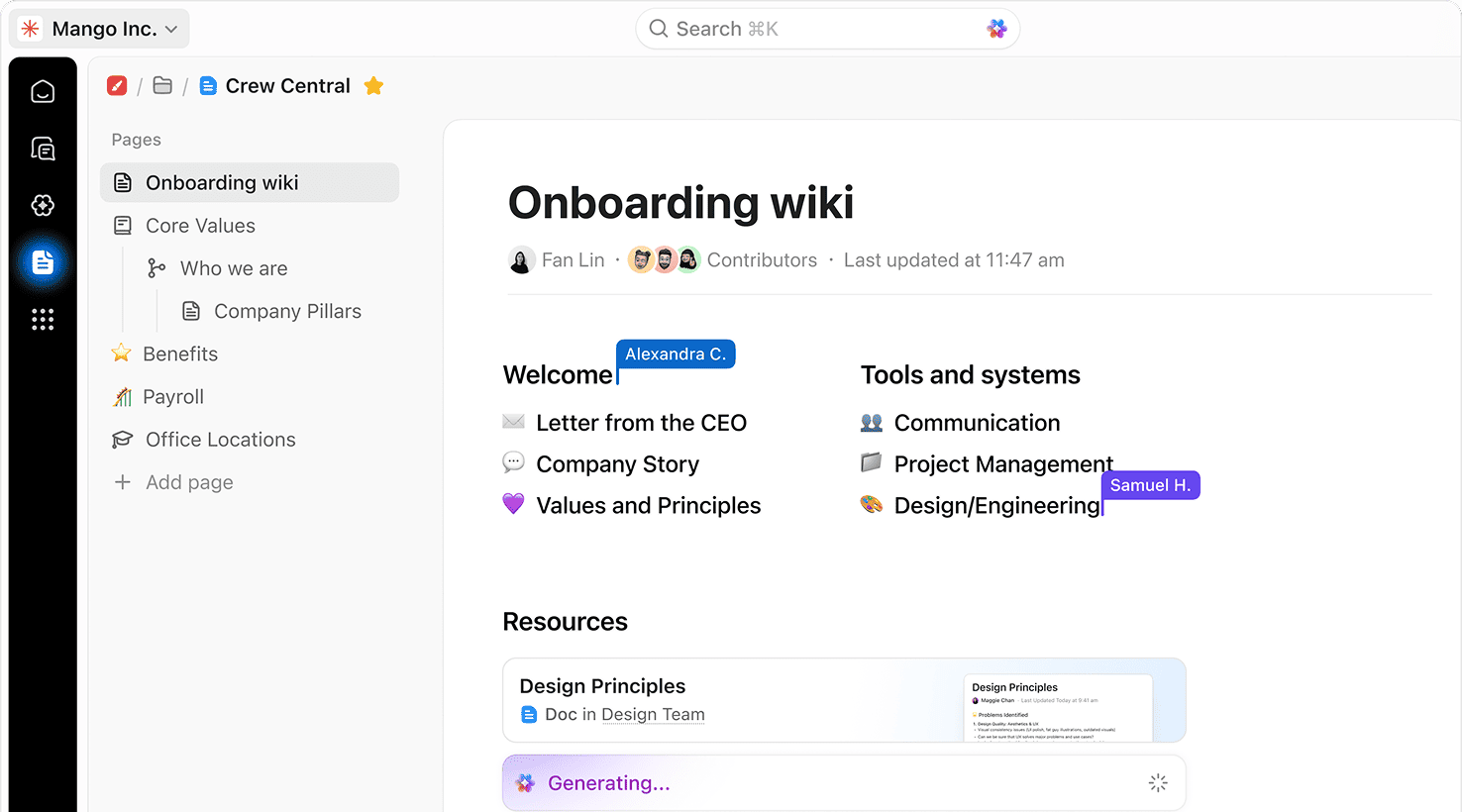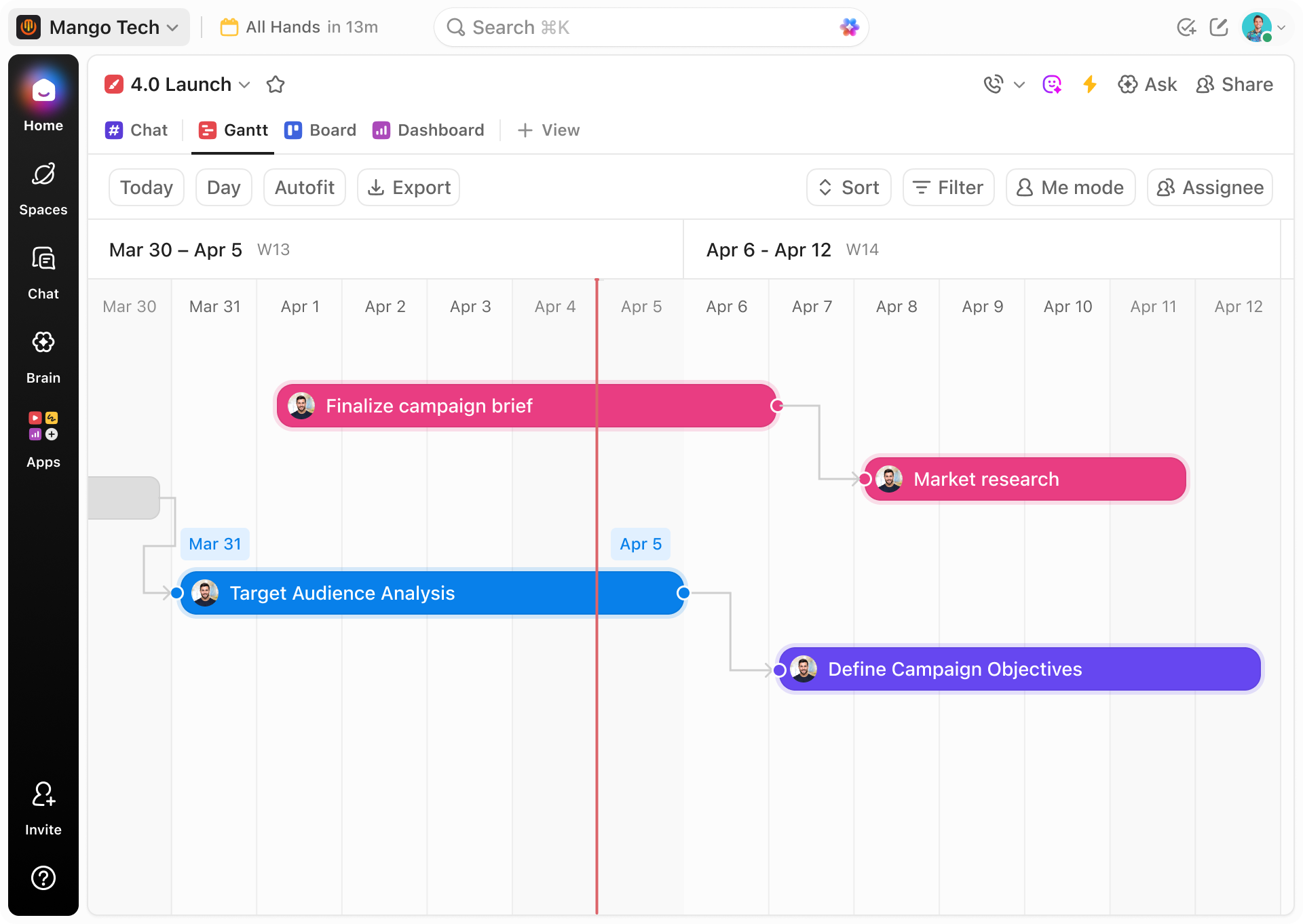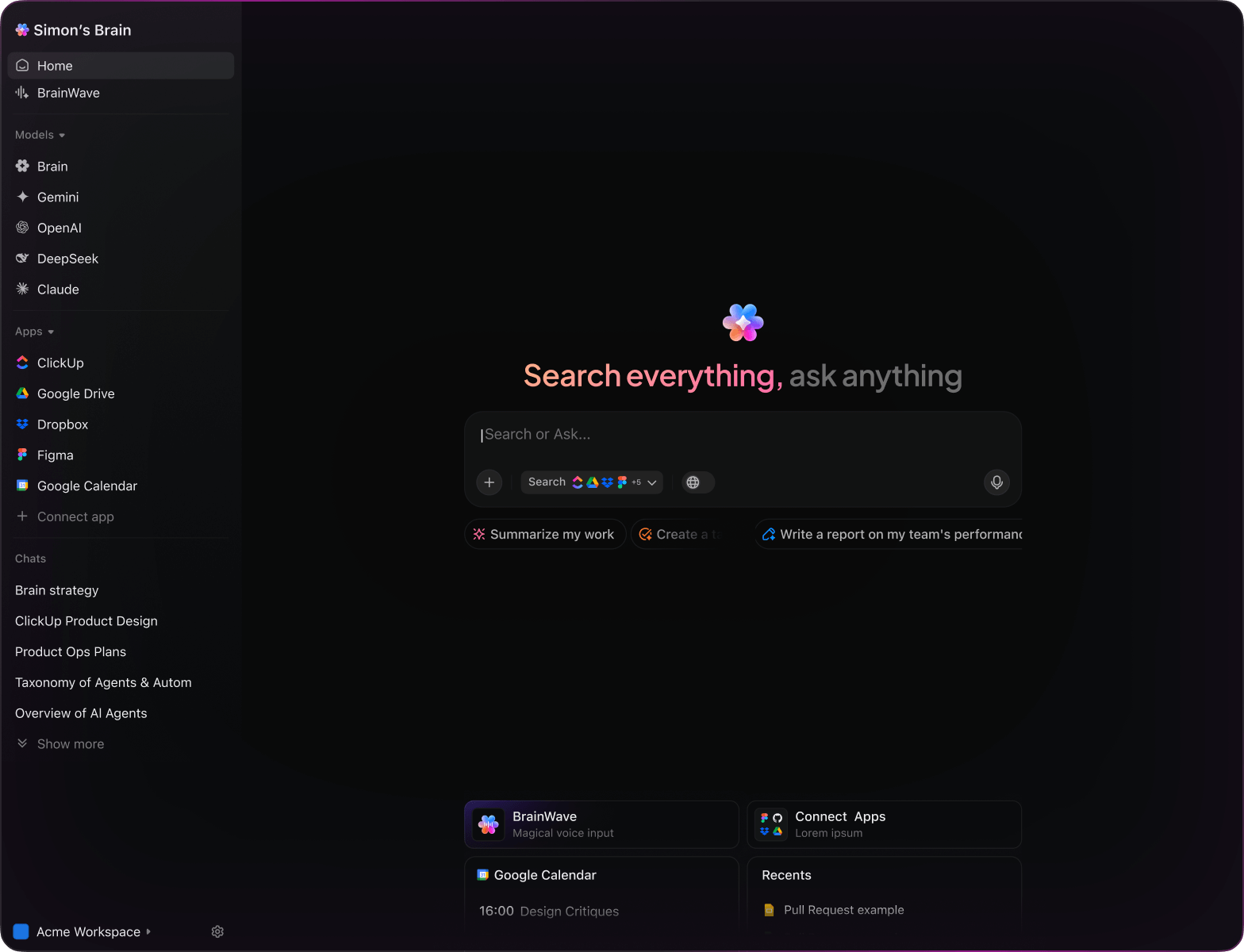AI Gantt Chart Generator
Unlock the Power of AI Gantt Chart Generator
Experience how AI transforms project timelines—automatically mapping tasks, dependencies, and milestones with precision. Leverage ClickUp Brain to visualize your project’s flow in moments.

Trusted by the world’s leading businesses
AI-Driven Project Planning
Understanding AI Gantt Chart Generators
An AI Gantt Chart Generator automates the creation and adjustment of Gantt charts—those essential visual timelines that keep projects on track. Traditionally, crafting these charts meant manual entry, constant updates, and juggling multiple tools like spreadsheets or standalone software.
AI shifts this by interpreting project data and dependencies through natural language or integrated sources, instantly producing clear, actionable timelines. With ClickUp Brain, your Gantt charts become dynamic, reflecting real-time project changes and team workflows within your workspace.
ClickUp Brain vs Traditional Tools
Elevate Project Scheduling with ClickUp Brain
ClickUp Brain integrates deeply for smarter, faster Gantt chart generation—less manual work, more accurate insight.
Conventional Gantt Tools
- Isolated software: Requires exporting and importing data across platforms.
- Static visuals: Charts often become outdated snapshots, lacking collaboration.
- Manual updates: Every timeline or dependency change demands hands-on edits.
- Limited integration: Poor connectivity with task or resource data.
- Basic dependency logic: Unable to adapt to complex project nuances dynamically.
ClickUp Brain Advantage
- Embedded in your workflow: Generates Gantt charts directly from your ClickUp tasks and projects.
- Live syncing: Charts update automatically as your project evolves.
- Intelligent dependency detection: Reads task relations, deadlines, and priorities.
- Collaborative editing: Team members can adjust timelines together in real-time.
- Brain Max customization: Tailor chart logic to unique project requirements.
Step-by-Step Process
How to Generate an AI Gantt Chart with ClickUp
Follow these steps to build precise, adaptive project timelines effortlessly.
1. Gather Project Data Seamlessly
Traditional challenge: Manually compiling tasks, dates, and dependencies from multiple sources.
With ClickUp Brain:
The AI scans your ClickUp workspace, extracting task details, due dates, and relationships to draft your project timeline instantly. Just prompt: “Create the Gantt chart for Q3 Marketing Campaign.”
2. AI Maps Task Dependencies Intelligently
Traditional challenge: Manually linking tasks to reflect true project flow.
With ClickUp Brain:
It analyzes task dependencies, priorities, and resource allocations to generate an accurate, interconnected timeline that mirrors your actual workflow.
3. Customize Visual Timeline Styles
Traditional challenge: Limited flexibility in chart layouts and styles.
With ClickUp Brain:
Adjust your chart using ClickUp’s Whiteboards or Mind Maps, or let Brain suggest grouping based on project phases or teams—making your Gantt chart as unique as your project.
4. Keep Your Gantt Chart Live and Dynamic
Traditional challenge: Static charts quickly become outdated with shifting deadlines.
With ClickUp Brain:
Your Gantt chart updates automatically as tasks progress, dates shift, or new dependencies emerge, ensuring your timeline always reflects reality.
Streamline Your Project Timelines
Skip tedious updates—create live, AI-powered Gantt charts instantly with ClickUp Brain.






Use cases
3 Transformative Ways to Use AI Gantt Chart Generator
Harness AI to bring clarity and control to complex project schedules.
Use case 1
Accelerate Product Launch Planning
Product managers use AI Gantt charts to visualize dependencies, align cross-functional teams, and forecast release timelines.
This dynamic timeline helps identify bottlenecks early and adapt plans on the fly, keeping launches on schedule and stakeholders informed.

Use case 2
Optimize Construction Project Scheduling
Construction planners leverage AI-generated Gantt charts to coordinate subcontractors, manage material deliveries, and track permit approvals.
Real-time updates minimize delays and cost overruns, ensuring complex builds progress smoothly.

Use case 3
Simplify Marketing Campaign Coordination
Marketing teams rely on AI timelines to orchestrate content creation, media buys, and event deadlines.
The adaptive chart ensures all moving parts stay aligned, boosting campaign effectiveness and on-time delivery.

Key Features
What Sets ClickUp’s AI Gantt Chart Generator Apart
Explore the essential capabilities that make your project planning smarter.
Natural Language Timeline Creation
Turn simple descriptions into detailed Gantt charts instantly.
Real-Time Data Synchronization
Automatically updates charts as project elements change.
Seamless Task Integration
Links charts directly to tasks, goals, and resources.
Flexible Layout Options
Supports diverse project types and team structures with customizable views.
Dependency and Milestone Intelligence
Understands complex relationships and critical path elements.
Collaborative Timeline Editing
Enables teams to co-create and refine schedules in real-time.
Elevate Your Project Management
Design, adjust, and track Gantt charts effortlessly—AI handles the complexity so you can focus on delivery.






FAQs